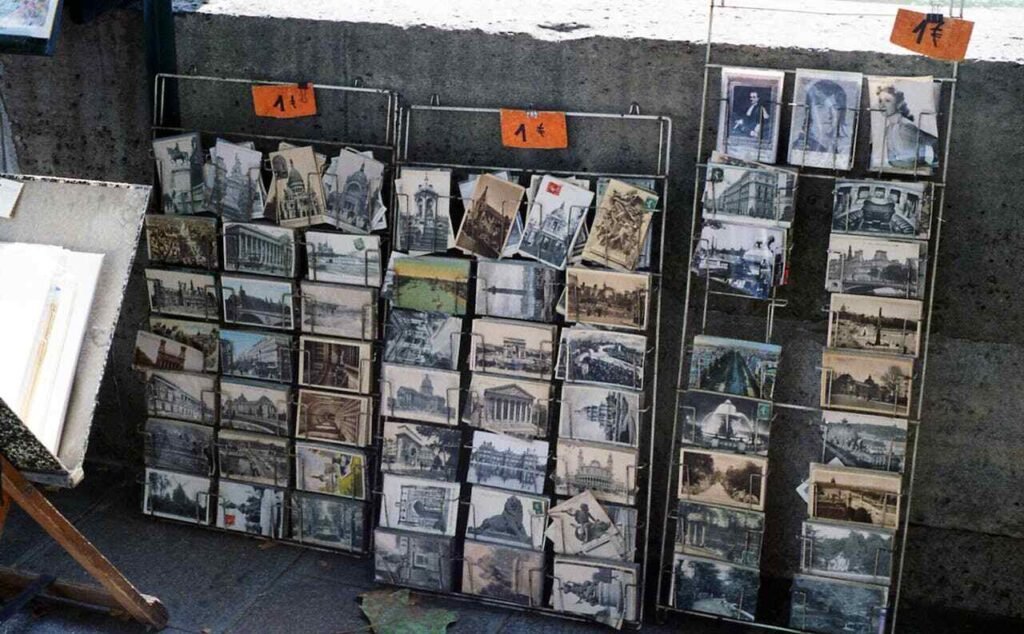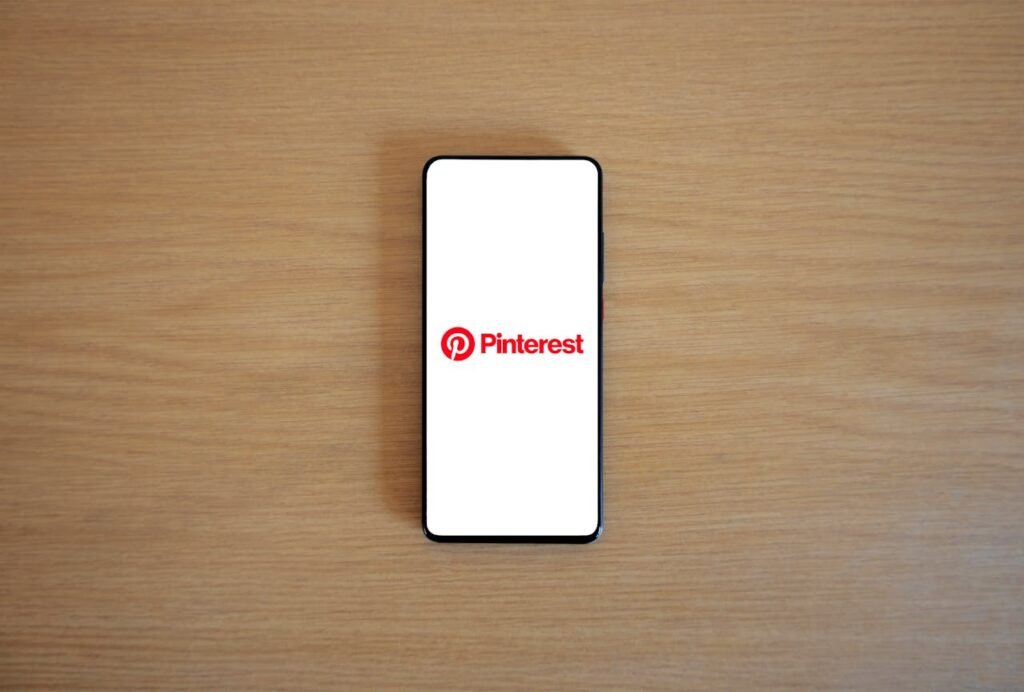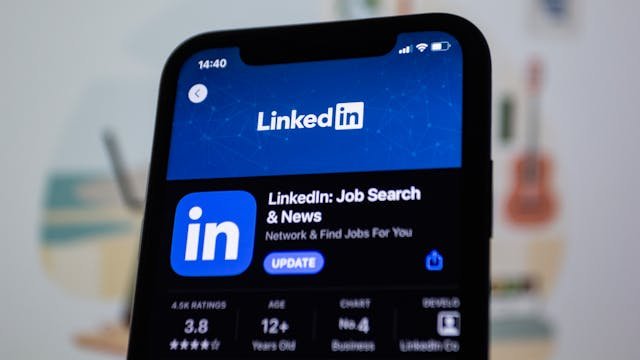Marketing postcards are a powerful tool for reaching potential customers directly. Despite the rise of digital marketing, postcards remain an effective way to grab attention and drive action. They are tangible, memorable, and can make a significant impact when designed correctly.
Understanding Your Audience
Identifying Your Target Audience
The first step in designing an effective marketing postcard is understanding who you’re trying to reach. Identifying your target audience allows you to tailor your message and design to resonate with them.
Consider factors such as age, gender, location, income level, and interests. Conduct market research to gather insights about your audience.
Use surveys, focus groups, and existing customer data to build a detailed profile. Understanding your audience’s needs and preferences will help you create a postcard that speaks directly to them.
Crafting a Message that Resonates
Once you know who your audience is, you need to craft a message that resonates with them. Your message should address their needs and offer a solution or benefit. Keep it simple and focused, as postcards have limited space.
Use clear, compelling language that captures attention and conveys your value proposition quickly. Avoid jargon and complex terms that might confuse or alienate your audience.
Your message should be straightforward and easy to understand, encouraging recipients to take action.
Designing the Layout
Choosing the Right Size and Format
The size and format of your postcard are important considerations. Standard sizes include 4×6 inches, 5×7 inches, and 6×9 inches. The size you choose will depend on your budget and the amount of information you want to include.
Larger postcards can make a bigger impact but may cost more to print and mail. Smaller postcards are more budget-friendly but have limited space for your message.
Choose a size that balances impact and cost-effectiveness.
Creating a Visually Appealing Design
A visually appealing design is crucial for grabbing attention. Start with a strong visual element, such as an eye-catching image or graphic. High-quality images can make your postcard more attractive and professional.
Use a clean, uncluttered layout that guides the reader’s eye through the content. Incorporate your brand colors, fonts, and logo to create a cohesive look that reinforces your brand identity.
Balance text and images to ensure your message is clear and easy to read.
Establishing a Strong Visual Hierarchy
A well-designed layout starts with a strong visual hierarchy. This means organizing the elements on your postcard so that the most important information catches the eye first.
Start with your headline, which should be the most prominent element, followed by your main message, visuals, and finally, your call to action. Use different font sizes, weights, and colors to create contrast and guide the reader’s eye through the content.
For instance, your headline might be in a bold, large font, while your subheading is smaller but still noticeable. This hierarchical structure helps ensure that recipients understand your message quickly and clearly.
Balancing Text and Images
Striking the right balance between text and images is crucial for an effective postcard layout. Too much text can overwhelm the reader, while too many images can distract from the main message.
Aim for a clean design that highlights your visuals while keeping your text concise and impactful.
Use high-quality images that reflect your brand and resonate with your audience. These could be product photos, lifestyle images, or illustrations that complement your message.
Place images strategically to enhance your text, not overshadow it. For example, a product image can be paired with a short description and a call to action.
Utilizing White Space Effectively
White space, or negative space, is the empty space around the elements of your postcard. Effective use of white space can make your design more readable and visually appealing.
It prevents your postcard from looking cluttered and helps important elements stand out. Strategically place white space around your headline, images, and call to action to draw attention to these areas.
White space can also create a sense of balance and harmony in your design, making it more inviting and easier to navigate.
Consistency with Brand Identity
Your postcard should be an extension of your brand, reflecting its identity and values. Use consistent brand colors, fonts, and logos to reinforce your brand recognition.
This consistency helps build trust and familiarity with your audience. For example, if your brand uses a specific color palette on your website and other marketing materials, incorporate those same colors into your postcard design.
The same goes for fonts and imagery style. Consistency across all touchpoints creates a cohesive brand experience.
Incorporating Eye-Catching Graphics
Graphics and icons can enhance your postcard design by drawing attention and conveying information quickly. Use graphics to highlight key points, direct the reader’s eye, or add visual interest.
For instance, arrows can point to your call to action, or icons can represent different product features or benefits.
Ensure that your graphics are high-quality and relevant to your message. Avoid using too many graphics, as this can make your postcard look busy and detract from the main message.
The goal is to enhance, not overwhelm.
Choosing the Right Color Scheme
Color plays a significant role in the effectiveness of your postcard. Choose a color scheme that aligns with your brand and the emotion you want to evoke. Bright colors can grab attention and convey excitement, while muted tones can create a sense of elegance and sophistication.
Use color to highlight important elements, such as your headline or call to action. Be mindful of color contrast to ensure that your text is readable.
For instance, dark text on a light background is generally easier to read than light text on a dark background.
Enhancing Readability with Typography
Typography affects how easily your message can be read and understood. Choose fonts that are clear and legible, even at smaller sizes. Avoid overly decorative fonts that can be hard to read, especially for body text.
Use a hierarchy of font sizes and styles to create a clear structure. Your headline should be the largest and boldest, followed by subheadings and body text.
Consistent use of typography helps guide the reader’s eye through the postcard and makes the information easier to digest.
Creating a Focal Point
A focal point is the part of your postcard that immediately draws the viewer’s attention. This could be an image, a bold headline, or a special offer. Having a clear focal point helps ensure that recipients notice the most important part of your message first.
Design your postcard so that the focal point stands out. Use size, color, and placement to make it the dominant element.
For example, if you’re promoting a special discount, make the discount percentage large and colorful so it immediately catches the eye.
Integrating Interactive Elements
Interactive elements can make your postcard more engaging and memorable. For example, include a QR code that leads to a landing page with more information or a special offer.
Interactive elements bridge the gap between your physical postcard and your digital presence, providing a seamless experience for the recipient. Ensure that any interactive elements are clearly explained and easy to use.
Include a brief instruction like “Scan this QR code to get your discount!” This encourages recipients to take the desired action and enhances the overall effectiveness of your postcard.
Writing Compelling Copy
Crafting a Strong Headline
Your headline is the first thing recipients will see, so it needs to be compelling. It should grab attention and entice the reader to learn more.
Keep it short and impactful, using strong action words that convey urgency or excitement. Think about what will resonate most with your audience.
For example, if you’re promoting a sale, highlight the discount or offer in the headline. If you’re launching a new product, emphasize its unique benefits.
Highlighting Key Benefits
The body of your postcard should highlight the key benefits of your product or service. Focus on what sets you apart from the competition and why the recipient should choose you.
Use bullet points or short paragraphs to break up the text and make it easy to scan. Be specific and avoid vague statements. For example, instead of saying “high-quality products,” explain what makes your products high quality.
Specific details help build credibility and trust.
Including a Clear Call to Action

Encouraging Immediate Response
A clear call to action (CTA) is essential for driving response. Tell recipients exactly what you want them to do, whether it’s visiting your website, calling for more information, or redeeming a special offer.
Use action-oriented language that creates a sense of urgency, such as “Call Now,” “Visit Today,” or “Limited Time Offer.”
Include any necessary details to make it easy for recipients to take action. This might include your website URL, phone number, or a promotional code.
Ensure that the CTA stands out visually, using bold text or a contrasting color.
Providing Multiple Contact Options
Offering multiple contact options increases the chances of a response. Include your phone number, website, and social media handles.
Some recipients might prefer calling, while others might want to visit your website or connect on social media.
Make sure all contact information is accurate and up-to-date. Test each method to ensure it works seamlessly, and consider including a QR code for easy access to your website or a special landing page.
Crafting an Irresistible Offer
Your call to action (CTA) should be compelling enough to make recipients want to act immediately. This often means crafting an irresistible offer that provides significant value.
Consider what incentives will be most attractive to your target audience. These could include discounts, free trials, limited-time offers, or exclusive access to new products or services.
For example, if you own a restaurant, your CTA could be “Visit us today and enjoy 20% off your first meal!” If you run a fitness center, it might be “Sign up now for a free one-week trial!”
The key is to make the offer clear, valuable, and time-sensitive to encourage immediate action.
Making the CTA Stand Out
Design plays a crucial role in making your CTA stand out. Use contrasting colors to make the CTA pop against the background of your postcard. Bold fonts and larger text sizes can also draw attention to your CTA.
Place it in a prominent position on the postcard, ideally near the bottom or center where the recipient’s eye naturally falls. Consider using visual elements like arrows or icons to direct attention to the CTA. Ensure that the text is concise and action-oriented.
Phrases like “Call Now,” “Visit Today,” or “Claim Your Offer” are direct and instructive, making it clear what the recipient should do next.
Providing Multiple Ways to Respond
To maximize your response rate, provide multiple ways for recipients to take action. Some people might prefer to call, while others might want to visit your website or stop by in person.
Include your phone number, website URL, and physical address if applicable.
For digital integration, consider adding a QR code that leads to a special landing page or an online form. This makes it easy for tech-savvy recipients to take action with just a quick scan.
Ensure all contact information is easy to read and prominently placed near the CTA.
Creating a Sense of Urgency
A sense of urgency can significantly boost your response rates. Phrases like “Limited Time Offer,” “Offer Ends Soon,” or “Act Now” create a feeling that the opportunity won’t last forever, prompting recipients to act quickly.
You can also use countdowns or specific deadlines to enhance this effect.
For example, “Offer valid until March 31st” gives a clear timeframe for the recipient to respond.
Urgency helps overcome procrastination and encourages immediate action, which is crucial for the success of your postcard campaign.
Testing Different CTAs
A/B testing different CTAs can help you determine which ones are most effective. Create two versions of your postcard with different CTAs and send them to similar segments of your mailing list. Track the response rates for each version to see which one performs better.
Analyze the results to understand why one CTA was more successful. It could be the wording, the design, the placement, or the offer itself.
Use these insights to refine your CTA and improve future campaigns. Continuous testing and optimization can significantly enhance the effectiveness of your marketing efforts.
Aligning the CTA with Campaign Goals
Your CTA should align with the overall goals of your campaign. If the primary goal is to drive traffic to your website, your CTA might be “Visit Our Website for More Details.” If you’re aiming to generate leads, it could be “Call Now for a Free Consultation.”
Make sure the action you’re asking recipients to take directly supports your campaign objectives.
This alignment ensures that your CTA is not only compelling but also strategic, driving meaningful results for your business.
Personalizing the Call to Action
Personalization can make your CTA more effective by making it feel more relevant to the recipient. Use variable data printing to include the recipient’s name or other personalized information in the CTA. For example, “John, claim your exclusive discount today!”
Personalized CTAs create a sense of individual attention and can significantly increase engagement. Ensure the personalization feels natural and adds value rather than just being a gimmick.
This approach can help build a stronger connection with your audience and improve response rates.
Personalizing Your Postcards
Using Variable Data Printing
Personalization can significantly increase the effectiveness of your postcards. Use variable data printing to personalize each postcard with the recipient’s name, address, or other relevant information.
Personalized postcards feel more tailored and can create a stronger connection with the recipient. Segment your mailing list to create targeted messages for different audience segments.
For example, you might send different postcards to new customers, loyal customers, or those who haven’t visited in a while. Tailoring your message to each segment can improve response rates.
Adding a Personal Touch
In addition to variable data printing, consider adding a personal touch to your postcards. Handwritten notes or signatures can make your postcard feel more special and personalized.
If you’re sending postcards to a smaller list, this extra effort can make a big difference. Personal touches show that you value your customers and are willing to go the extra mile to connect with them.
This can build loyalty and encourage repeat business.
Choosing the Right Printing and Paper Quality

Selecting High-Quality Paper
The quality of the paper you use can significantly impact the perception of your postcard. High-quality paper feels more substantial and conveys a sense of professionalism.
Consider using a thicker cardstock, which is more durable and stands out among other mail. Glossy finishes can make colors pop and images appear more vibrant, while matte finishes provide a sophisticated, understated look.
Choose a finish that aligns with your brand’s image and the message you want to convey.
Working with a Reliable Printer
Choosing a reliable printer is crucial for ensuring your postcards look professional and are delivered on time. Research different printing companies, read reviews, and request samples of their work.
Look for a printer that offers high-quality printing, competitive pricing, and excellent customer service.
Discuss your project in detail with the printer to ensure they understand your requirements. Ask about their turnaround times and any additional services they offer, such as mailing or fulfillment.
A good printer can be a valuable partner in your marketing efforts.
Testing and Refining Your Postcards
Conducting A/B Testing
A/B testing, or split testing, involves creating two versions of your postcard to see which one performs better. Test different elements such as headlines, images, colors, and calls to action. Send each version to a small segment of your mailing list and track the response rates.
Analyze the results to determine which version was more effective. Use these insights to refine your design and message before sending out the final batch.
Continuous testing and optimization can significantly improve the effectiveness of your postcards.
Gathering Feedback
Collect feedback from your recipients to understand how they perceive your postcards.
This can be done through follow-up surveys, customer interviews, or by monitoring responses. Ask about the design, message, and overall impression.
Use this feedback to make adjustments and improve future campaigns. Understanding what resonates with your audience can help you create more effective marketing materials.
Timing and Distribution
Choosing the Right Time to Send
Timing can play a significant role in the success of your postcard campaign. Consider when your target audience is most likely to be receptive to your message.
For example, sending postcards promoting holiday sales a few weeks before the holiday can increase relevance and response rates.
Think about the frequency as well. Regularly sending postcards can keep your brand top of mind, but avoid sending too frequently to prevent recipient fatigue.
Plan your campaigns strategically to maximize impact.
Ensuring Accurate Distribution
Accurate distribution is key to reaching your intended audience. Maintain a clean and updated mailing list to avoid sending postcards to incorrect addresses.
Use postal services that offer tracking and confirmation to ensure your postcards are delivered.
Consider using geographic targeting if your campaign is location-specific. This can help you reach the right people and avoid wasting resources on areas outside your target market.
Measuring Success and ROI
Tracking Response Rates
Tracking response rates is essential for measuring the success of your postcard campaign. Use unique tracking codes, phone numbers, or landing pages to monitor how many recipients respond to your postcard.
Analyze this data to understand the effectiveness of your message and design. Calculate your response rate by dividing the number of responses by the total number of postcards sent.
A higher response rate indicates a more successful campaign.
Evaluating Return on Investment
Evaluating the return on investment (ROI) helps you determine the overall effectiveness of your campaign.
Compare the costs of designing, printing, and mailing your postcards to the revenue generated from the campaign. Calculate ROI by subtracting the campaign costs from the revenue generated, then dividing by the campaign costs.
A positive ROI indicates a successful campaign. Use this information to refine your strategy and allocate resources more effectively in the future.
Integrating Postcards with Digital Marketing

Using QR Codes for Seamless Integration
Integrating digital elements with your postcards can create a more interactive and engaging experience. QR codes are an excellent tool for this purpose. Include a QR code on your postcard that directs recipients to a special landing page, video, or online offer.
Ensure the QR code is prominently placed and easy to scan. Test the code to make sure it works correctly and leads to the intended destination.
This seamless integration can bridge the gap between offline and online marketing, providing a more comprehensive customer experience.
Encouraging Social Media Engagement
Leverage your postcards to boost your social media presence. Encourage recipients to follow your social media accounts or participate in social media contests.
You can offer incentives such as discounts or entry into a giveaway for those who engage with your brand online.
Include your social media handles on the postcard and highlight any specific hashtags you want recipients to use. This can increase your online visibility and foster a community of engaged followers who are more likely to become loyal customers.
Designing for Different Campaign Goals
Promoting Special Offers and Discounts
Postcards are particularly effective for promoting special offers and discounts. Design your postcard to highlight the offer prominently.
Use bold text and eye-catching colors to draw attention to the discount or promotion.
Clearly state the terms and conditions of the offer and include a strong call to action. For example, if you’re offering a limited-time discount, create a sense of urgency by stating the expiration date.
Make it easy for recipients to redeem the offer by providing clear instructions.
Announcing New Products or Services
Use postcards to announce new products or services to your customers. Create a visually appealing design that showcases the new offering.
Include high-quality images and key benefits to generate excitement.
Provide a brief description of the new product or service and explain how it meets the needs of your customers. Encourage recipients to visit your store, website, or contact you for more information.
Announcing new offerings through postcards can create buzz and drive interest.
Personalizing Postcards for Different Segments
Tailoring Messages for Various Customer Groups
Personalization goes beyond just using the recipient’s name. Tailor your messages for different customer segments to make your postcards more relevant and impactful.
For example, you might create different postcards for new customers, loyal customers, or those who haven’t purchased in a while. Use your customer data to segment your audience and craft messages that address their specific needs and interests.
For new customers, highlight your unique value proposition and any welcome offers. For loyal customers, focus on appreciation and exclusive benefits.
Personalized messages can increase engagement and response rates.
Using Customer Data for Customization
Leverage customer data to customize your postcards further. For instance, if you have purchase history data, you can recommend related products or services.
If you know your customers’ birthdays, send personalized birthday postcards with a special offer.
Data-driven customization makes your postcards feel more relevant and personal. It shows that you understand your customers’ preferences and are willing to provide them with tailored experiences.
This level of personalization can enhance customer loyalty and satisfaction.
Addressing and Mailing Best Practices
Ensuring Accurate and Up-to-Date Mailing Lists
Maintaining an accurate and up-to-date mailing list is crucial for the success of your postcard campaign. Regularly clean your mailing list to remove duplicates, incorrect addresses, and outdated information.
This ensures your postcards reach the intended recipients and reduces wasted resources.
Use address verification tools and services to validate addresses before mailing. This can help you avoid undeliverable mail and improve delivery rates.
Keeping your mailing list current and accurate is essential for maximizing the impact of your campaign.
Choosing the Right Postal Service
Selecting the right postal service is important for ensuring your postcards are delivered on time and in good condition. Compare different postal services based on cost, delivery speed, and reliability.
Consider using services that offer tracking and confirmation to monitor the delivery of your postcards. Discuss your needs with the postal service provider to ensure they can meet your requirements.
Factor in delivery times when planning your campaign to ensure your postcards arrive at the optimal time for maximum impact.
Environmental Considerations
Using Eco-Friendly Materials
Sustainability is increasingly important to consumers. Consider using eco-friendly materials for your postcards, such as recycled paper and vegetable-based inks.
Highlighting your commitment to sustainability can enhance your brand image and appeal to environmentally conscious customers.
Research printing companies that offer eco-friendly options and discuss your requirements with them. Using sustainable materials not only benefits the environment but also sets your brand apart as a responsible business.
Promoting Sustainability in Your Message
Incorporate sustainability into your postcard’s message. Educate recipients about your eco-friendly practices and encourage them to recycle the postcard after use.
Including a small note about your commitment to the environment can build goodwill and strengthen your brand’s reputation.
Showcasing your sustainability efforts can attract customers who prioritize eco-friendly businesses and enhance your overall brand image.
Analyzing Campaign Performance
Setting Clear Objectives and KPIs
To measure the success of your postcard campaign, set clear objectives and key performance indicators (KPIs). Objectives might include increasing website traffic, generating leads, or boosting sales.
KPIs could include response rates, conversion rates, and return on investment (ROI).
Establishing specific, measurable goals allows you to track your progress and determine the effectiveness of your campaign.
Use these metrics to make data-driven decisions and improve future campaigns.
Conducting Post-Campaign Analysis
After your postcard campaign concludes, conduct a thorough analysis to evaluate its performance. Compare the actual results to your objectives and KPIs to understand what worked well and what didn’t.
Analyze different aspects such as design, message, timing, and distribution to identify areas for improvement.
Gather insights from customer feedback and response data to refine your approach. Use this analysis to optimize future postcard campaigns and ensure continuous improvement.
Wrapping it up
Designing effective marketing postcards requires a strategic approach and attention to detail. Focus on understanding your audience, crafting compelling messages, and creating a visually appealing layout.
Use strong visual hierarchy, balance text and images, and incorporate eye-catching graphics while maintaining brand consistency.
Leverage interactive elements and ensure your call to action is clear and compelling. By following these guidelines, you can create postcards that not only capture attention but also drive action and deliver tangible results.
READ NEXT:
- Exploring the Impact of Social Media on Mental Health
- Adventurous Social Media Content Ideas for Travel Agents
- Innovative Social Media Ideas for Marketing Agencies
- Promoting Health and Wellness on Social Media: Ideas and Tips
- Empowering Social Media Post Ideas for International Women’s Day






















Comments are closed.